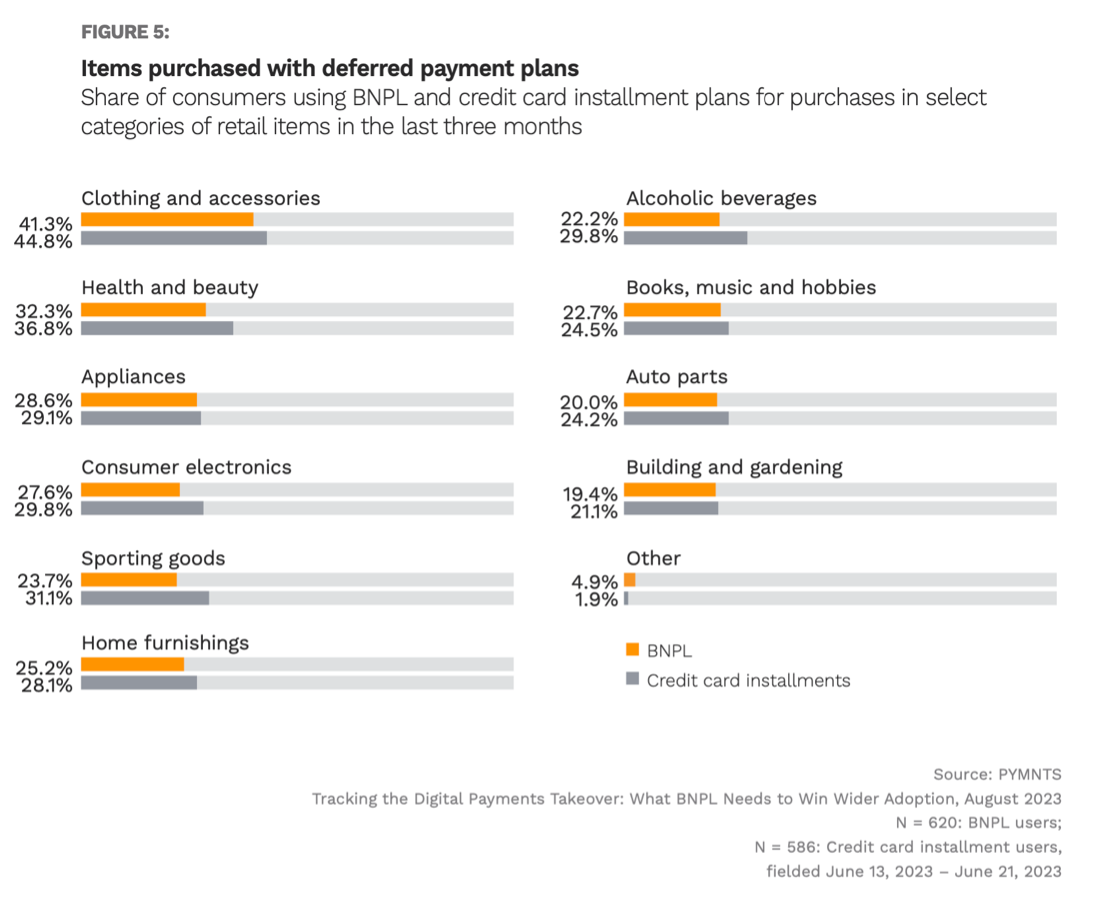
Millennials and bridge millennials most frequently turn to deferred payments for purchasing consumer items.
These consumers are generally considered to have been born between 1980 and 1989, and between 1990 and 1999, respectively. As PYMNTS has found, they are also the highest spenders on average, along with Generation X, and show the greatest intention to continue using deferred payments, making them a key target segment for merchants offering installment plans. Around 18% of the members of these two generations use both BNPL and credit cards as deferred payment plans, double the average sample.
These are some of the conclusions drawn from “Tracking the Digital Payments Takeover: What BNPL Needs to Win Wider Adoption,” the report by PYMNTS Intelligence and Amazon Web Services. The study was based on a survey of over 3,100 U.S. consumers about the features they expect from deferred payment plans.
According to this study, one in three millennials bought retail items on installment plans in the second quarter of 2023, while the intergenerational average barely reached one in five.
Among their financed purchases, clothing and accessories, beauty and health products, sports goods and appliances stand out. For financing all these items, millennials and bridge millennials preferred credit card installment plans, allocating, on average, nearly $500 per purchase.
On the other hand, they opted for BNPL options to finance other products and services, such as travel, spending an average of $362 per purchase, as stated in another PYMNTS Intelligence study: “The Credit Economy: How Consumers Financed Their Summer Travel.”
One characteristic specific to millennials, as gleaned from this survey, is that they are the generation that most often turns to deferred payments to purchase more goods they cannot afford otherwise.
Some retail companies have identified this opportunity and launched installment purchasing programs within the most sought-after categories for millennials and bridge millennials. For example, IKEA recently announced the launch of its “Pay in 4” service, available in its stores and online, in the U.S. The service lets customers pay for IKEA products in four installments over six weeks.
 Christine Brigante, financial service deployment project leader for IKEA, noted how the move could benefit customers.
Christine Brigante, financial service deployment project leader for IKEA, noted how the move could benefit customers.
“We’ve brought this service to market in the right way with the right parameters to allow our customers more flexibility, but also to keep somebody who may be a little more impulsive from getting themselves into financial trouble,” Brigante said.
In addition to gaining access to products they otherwise couldn’t afford, the second reason for choosing deferred payment plans is the benefits derived from rewards programs. That’s according to 28% of millennials, who registered the highest percentage among all generations.
In conclusion, merchants offering installment plans that ease consumers’ access to their products can consider specifically targeting this generation, including providing them option to gain rewards in exchange, to gain more market share.